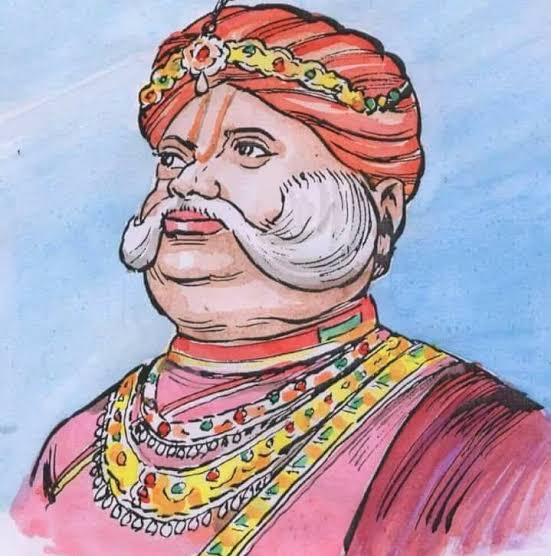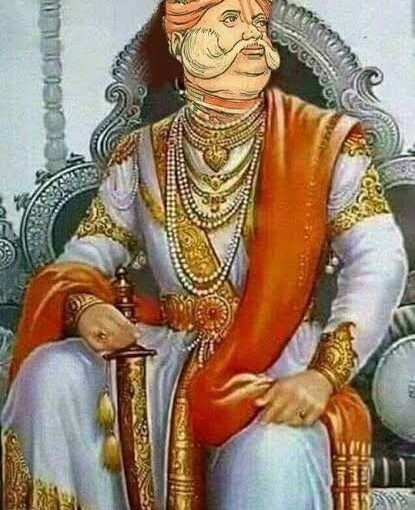In our previous articles, we had covered the stories of Jat warriors like Gokula and Rajaram who launched an armed insurrection against the Mughal Empire. In this part, we will continue our series of the forgotten Jat heroes learning about Maharaja Surajmal who fought for the protection of our country.
From the beginning of Medieval History, the Jat community had always fought against the invaders and offered them fierce resistance in many cases. For example, when Mahmud Ghazni sacked the Somnath Temple he faced strong resistance from the Jats in his return journey.
Content
Rise of Maharaja Surajmal
Maharaja Surajmal was born on 13 February 1707. This is the same date in history on the day when Aurangzeb died. King Surajmal is taken with great pride among the kings who have a special place in north India for giving a befitting reply to the invasion of the Mughals.

He was the son of Raja Badan Singh. Maharaja Surajmal was a skilled administrator, visionary, and a wealthy emperor of diplomacy. Surajmal had become everyone’s favorite in Braj Pradesh due to his bravery from adolescence.
Maharaja Surjmal united the Jats under his banner and fought many battles in order to maintain the hegemony of the Jats.
Note: After the death of Alamgir i.e. Aurangzeb, the Mughal empire started to crumble both economically and politically. The Deccan campaigns of the Mughal Empire resulted in a huge loss of its economy. Due to this several, kingdoms revolted against them and declared themselves independent kingdoms.
Military Career of Maharaja Surajmal
He had a good relationship with Maharaja Jai Singh of the princely state of Jaipur. After the death of Jaisingh, his sons Ishwari Singh and Madho Singh started fighting over the princely status as the heirs.
Surajmal wanted to make the elder son Ishwari Singh the next heir of the princely state, while Maharana Jagat Singh of Udaipur state was in favour of making the younger son Madho Singh the King.
In the event of this difference, the fight over the throne started. Ishwari Singh won the struggle in March 1747. The battle did not completely end here.
Madho Singh returned to the battlefield with the Marathas, Rathores, and Sisodia Kings of Udaipur. In such an environment, king Surajmal reached the battlefield with 10,000 soldiers to support Ishwari Singh.
In this war, Ishwari Singh was victorious and he got the royal text of Jaipur. After this battle, the dunk of Maharaja Surajmal started ringing all over India.
Later on 1 January 1750 Maharaja Surajmal crushed the Mughal army of Salabat Khan and forced the latter to accept all his terms.
Later during the civil war among the Mughal Maharaja Surajmal plundered old Delhi in support of Safdar Jung.
By 1753, Maharaja Surajmal had extended his jurisdiction to Delhi and Feroz Shah Kotla. Angered by this, the Nawab of Delhi, Ghaziuddin instigated the Maratha chieftains against Surajmal.
The Marathas attacked Bharatpur. He surrounded the fort of Kumher for several months. The Marathas could not capture Bharatpur in this attack, but they had to pay the price of this attack in the form of the death of Khanderao Holkar, son of Maratha Sardar Malharrao. After some time the Marathas made a treaty with Surajmal.

Surajmal had built the impregnable Lohagarh Fort, which the British could not penetrate even after attacking 13 times. The walls of this fort made of mud were made so thick that even thick cannon balls could never cross them.
This is the only fort in the country, which has always been impenetrable.
At that time, Jat power was at its peak due to the status of Surajmal. The Mughal and Marathas took strategic assistance from Surajmal on many occasions.
Later, due to some estrangement, Surajmal’s relations with Maratha Sardar Sadashiv Bahu deteriorated.
By 1756 Surajmal had established himself as an efficient and visionary leader. He was considered the most powerful king at the time who not only had enormous wealth but also had a vast kingdom. According to Sayyid Ghulam Hussain
“Suraj Mal was the eye and the shining taper of the Jat tribe a prince who rendered himself famous by his good manners and civil deportment as well as by his conquests and his superior knowledge in the arts of government”.
Maharaja Surajmal and Jats in Third Battle of Panipat
In the third battle of Panipat, the Marathas fought against Ahmad Shah Abdali. The Maratha leader i.e. Sadashivrao Bhau was able to form an alliance with the charismatic Jat leader Maharaja Surajmal. But soon a discord occurred between the two and Bhau rejected the advice of Surajmal on the conduct of the war against Abdali.
“Surajmal suggested that heavy baggage, artillery, and the family members (non-combatants) are not necessary for war. He suggested that family members especially women should be stationed at Jhansi for better communication with the allied Marathas there. ”
Thousands of Maratha warriors sacrificed their lives in this war. The logistics of the Marathas were also exhausted.
If the relations of the Marathas had not deteriorated with Surajmal, they would not have had this condition in this war. Despite this, Surajmal, showing his humanity made arrangements for medical and food for the injured Maratha soldiers. Maharaja Surajmal was aware of the fact that this behavior of generosity will trigger Abdali and the latter surely attack his territory next. But proud Jat king didn’t pay any attention to these believes and did everything he could to help the retreating Marathas.
How did Maharaja Surajmal die?
Jat Maharaja Surajmal died on 25th December 1763 in a battle with Nawab Najibudaula on the banks of the river Hindon. His courage, and valor have been described by the poet Sudan in a composition called “Sujan Charitra”.
Legacy of the Jat legend King Surajmal
At that time the expansion of the princely state of Bharatpur had reached Dholpur, Agra, Mainpuri, Aligarh, Hathras, Etawah, Meerut, Rohtak, Mewat, Rewari, Gurgaon, and Mathura in addition to Bharatpur due to Surajmal.
At the time of his death, he had an army of about 15,000 cavalries and 25,000 infantry along with powerful numerous strong forts. His architectural masterpiece like Gopal Bhavan, Suraj Bhavan, and Krishna Bhavan is a living example of his glory.
LIKE WHAT WE ARE DOING? DONATE TO DHARMAYUDH
If you support what we are doing and would like to contribute to help us grow and reach more Indians to teach them more about such forgotten historic Indian Heroes and stories, please consider donating any amount. It will help us grow.

